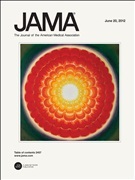
ARTHROPLASTY
Noninferiority of low-intensity to standard-intensity warfarin in geriatric hip or knee arthroplasty
JAMA. 2019 Sep 3;322(9):834-842.1650 elderly patients undergoing a hip or knee arthroplasty were randomized to receive a low-intensity dose (International Normalized Ratio (INR) = 1.8) or standard-intensity dose (INR = 2.5) of warfarin for the prevention of thromboembolic events. The primary outcome of interest was the composite outcome of VTE and death. Secondary outcomes of interest included the rate of major bleeding and the proportion of patients with a INR greater or equal to 4. Follow up was performed for up to 90 days post-surgery. The results revealed no significant difference between groups in the composite outcome of VTE and death, however this did not meet the criteria for non-inferiority. No significant difference in the rate of major bleeding was observed between the two groups. The proportion of patients with INR => 4 was significantly higher in the standard-intensity warfarin group.
Unlock the full ACE Report
You have access to {0} free articles per month.Click below to unlock and view this {1}
Unlock NowCritical appraisals of the latest, high-impact randomized controlled trials and systematic reviews in orthopaedics
Access to OrthoEvidence podcast content, including collaborations with the Journal of Bone and Joint Surgery, interviews with internationally recognized surgeons, and roundtable discussions on orthopaedic news and topics
Subscription to The Pulse, a twice-weekly evidence-based newsletter designed to help you make better clinical decisions
Exclusive access to original content articles, including in-house systematic reviews, and articles on health research methods and hot orthopaedic topics
Or upgrade today and gain access to all OrthoEvidence content for just $1.99 per week.
Already have an account? Log in


Subscribe to "The Pulse"
Evidence-Based Orthopaedics direct to your inbox.
{0} of {1} free articles
Become an OrthoEvidence Premium Member. Expand your perspective with high-quality evidence.
Upgrade Now












































































